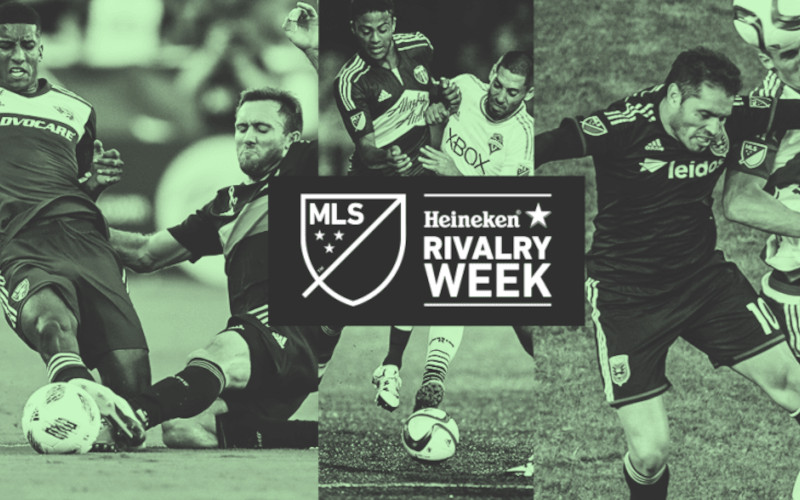Back in August 2014, on a spectacularly sunny Sunday afternoon in Ann Arbor, Michigan, two footballing giants stepped out onto the largest stadium in the United States of America, going toe-to-toe with each other in front of an incredible crowd of 109,318 people. The occasion produced two teams playing fast, intelligent football, scoring several impressive goals and totally captivating their fascinated audience for the entire ninety minutes; however, this enthralling exhibition was not an MLS fixture. In fact, the two clubs involved were English and Spanish, and there wasn’t one US-born player on show.
The fixture, between Manchester United and Real Madrid, is still a record attendance for a football match in the US, and was staged as part of the International Champions Cup (ICC), a global series of pre-season friendlies that involves some of the most prestigious clubs in the world. The tournament is the brainchild of Relevent Sports, a venture capital firm founded in 2012 by US businessman Matt Higgins and Miami Dolphins owner Stephen Ross, and has been hugely successful in terms of its rapid growth and audience interest. However, many across the Atlantic are slightly more sceptical of its blatant commercialisation and the perceived over-influence of its executive chairman, Charlie Stillitano, who has courted controversy in the past with some of his views on the direction European football could take.
The clubs themselves undoubtedly recognise the marketing benefits of playing pre-season friendly matches in the US against high profile opposition, but aside from the profits of a shrewd business investment, Relevent’s intentions are not so clear. Much of Stillitano’s language is business-oriented, describing the ICC as a “product” that offers “exposure” to its participants, and is ultimately designed to capitalise on the “untapped soccer market” within the US; the consequences of Relevent’s plans for the European game are open to speculation, but its plans for the States suggest a different question – just how untapped is this market?
The official party line of course is that these showpiece events are about growing the game in the US (as well as the shirt sales figures for the clubs involved), and admittedly, seeing the likes of Cristiano Ronaldo and Lionel Messi up close is bound to pique interest in even the casual observer. However, this grab for fans (or “customers”, as Stillitano would no doubt view them) runs the risk of undermining Major League Soccer in the long run, which is still building itself in the States as an established and respected entity; whilst it is easy to assume the growth of football and the growth of the MLS are mutually beneficial, the fact is this is not the case, and neglecting the latter in pursuit of the former could actually have a detrimental effect. After all, fans of the English game are no strangers to what happens when the game’s governing body puts profit before the development of domestic players.
The warning signs of this are already present. During the national team’s Gold Cup campaign in July for example, ICC games were staged on the same night. In each instance, the attendances at these matches were far higher than those for the national team matches. In general, average attendances in the MLS are far lower than the crowds that are drawn to the ICC games and, even more worryingly, media coverage – especially during the month that the tournament takes place – also tends to reflect this trend.
Of course, none of this means that the MLS is necessarily in a bad place. Interest and attendances are constantly on the rise, with major cities fiercely competing for the allotted franchise extensions; rivalries and traditions are being formed between clubs, and a unique fan culture is being built. Indeed, despite still being below the ICC averages, several clubs in the league such as Atlanta United and Seattle Sounders actually boast consistently larger crowds than many of the European giants. But forcing itself to compete directly with the biggest and best clubs in the world is always going to be counter-productive for the league, in terms of standards on the pitch and general interest off it. It seems slightly self-defeating to highlight the inadequacies of your own domestic competition when you are trying to promote a viable and long-term institution, and the shortsightedness of Stillitano’s quest for market growth can very easily conflict with the country’s need for footballing growth.
So what is the compromise? In order to compete for the attention of the American sporting public, it can be argued that football in the States needs to produce a player that can push on to superstar status. The traditional “big four” sports in the US are all either only played predominantly in North America (NFL and baseball), or represent the global gold standard (NHL and NBA), and so are rife with truly global superstars. Whilst the country has undoubtedly produced several highly talented and successful football exports, none can be classed in this category; David Beckham raised the profile of the league to a significant extent during his spell in Los Angeles, whilst Freddy Adu – despite the cautionary nature of his tale – is perhaps the closest the game has come to a home-grown icon. As a fringe sport however, there is no Tiger Woods, Serena Williams or Ronda Rousey to elevate the game’s commercial profile to the next step.
This is why the careful cultivation and management of the MLS is so important. Although the likes of Thierry Henry, Andrea Pirlo and David Silva give the league a measure of credibility – as well as appealing to European broadcasters – the finding and discovering of more Freddy Adus has to be the league’s long term priority, not just for the improvement of the national team but for the aforementioned progression of the league’s profile and credibility too. Ultimately though, there are few – if any – nations in the world that possess the potential of the US, and it has an incredibly exciting opportunity to build a footballing empire almost from scratch. Whilst there is a long way to go, it shouldn’t let the short term lure of the game’s current royalty detract from the development of what could one day be its future.




